When it comes to premium SUVs, the Mercedes GLB and the Volvo XC60 stand out as two compelling choices in 2024, each offering a unique blend of technology, performance, and design. In this comparison, we’ll delve into the technical specifications, innovations, and driving experiences of both models to help you make an informed decision.
Mercedes GLB vs Volvo XC60 – Performance, range & efficiency compared
Compare performance, boot capacity, efficiency and price at a glance.
Find out which car is the better choice for you – Mercedes GLB or Volvo XC60?
Design and Dimensions
The Mercedes GLB flaunts a classic SUV silhouette with modern touches. Measuring 4634 mm long, 1834 mm wide, and standing at 1692 mm in height, it exudes a robust presence. The XC60, on the other hand, measures 4688 mm long and 1902 mm wide, making it slightly larger and offering a more athletic stance with a height of 1658 mm. Both vehicles feature five doors and seating for five, emphasizing practicality.
Performance and Powertrains
Under the hood, the Mercedes GLB provides a versatile range of engine options. It comes in petrol and diesel variants, with power outputs ranging from 116 HP to a grunty 320 HP. The acceleration from 0 to 100 km/h is impressive, with top variants clocking in at a swift 5.5 seconds. The availability of both Front-Wheel Drive and All-Wheel Drive configurations enhances its versatility.
In contrast, the Volvo XC60 takes performance up a notch with its hybrid engines. With petrol MHEV and plug-in hybrid options, power ranges from 250 HP to a staggering 455 HP in the performance-focused variants. The XC60's rapid acceleration of 4.9 seconds (in the most potent variant) positions it as a fierce competitor. Furthermore, the All-Wheel Drive system is standard across all versions, ensuring superior traction and handling.
Fuel Efficiency and Emissions
When considering fuel economy, the Mercedes GLB offers competitive consumption figures, averaging between 5.6 to 9 L/100km, depending on the engine variant. Its CO2 emissions range from 146 to 204 g/km, placing it in efficiency classes F to E.
The Volvo XC60 shines in this department, especially with its plug-in hybrid configurations, showing an astonishing consumption figure of just 0.9 L/100km and an electric range of up to 80 km with a battery capacity of 14.7 kWh. Its CO2 emissions are remarkably low for a vehicle of its size, ranging from 22 g/km in the hybrid versions to 174 g/km for the traditional petrol variant, earning a solid efficiency rating of B.
Interior Technology and Comfort
Inside the GLB, the cabin is equipped with the latest technology, including the MBUX infotainment system, which is highly interactive and user-friendly. The spacious interior is marked by quality materials and a modern aesthetic, providing an upscale feel. With a trunk capacity of up to 570 liters, it stands out for practicality.
The Volvo XC60 doesn’t fall short in technology either. It features the brand’s Sensus infotainment system, seamlessly integrating with smartphones and offering intuitive controls. Although its trunk capacity is slightly less at 483 liters, the XC60 compensates with premium finishes and an ergonomic layout that enhances passenger comfort, making long drives a pleasure.
Safety Innovations
Both SUVs are equipped with advanced safety features, reinforcing the brands’ commitments to safety. The Mercedes GLB offers features like active brake assist and lane-keeping assist, ensuring a safe driving experience. Meanwhile, the Volvo XC60 takes safety to the next level with its renowned Pilot Assist feature, which combines adaptive cruise control with lane guidance, making highway driving effortless.
Conclusion: Which SUV Reigns Supreme?
Deciding between the Mercedes GLB and the Volvo XC60 ultimately depends on your personal preferences. The GLB impresses with its versatile engine range and practicality, making it ideal for families. Meanwhile, the XC60 excels in performance, cutting-edge hybrid technology, and safety features, catering to those who prioritize eco-friendliness and advanced driver assistance.
Whether you opt for sophistication in the GLB or technological prowess in the XC60, both models promise exceptional experiences on the road.
Here’s where it gets real: The technical differences in detail
Costs and Efficiency:
Looking at overall running costs, both models reveal some interesting differences in everyday economy.
Mercedes GLB has a clearly perceptible advantage in terms of price – it starts at 40500 £, while the Volvo XC60 costs 49200 £. That’s a price difference of around 8682 £.
Fuel consumption also shows a difference: Volvo XC60 manages with 2.80 L and is therefore convincingly more efficient than the Mercedes GLB with 5.60 L. The difference is about 2.80 L per 100 km.
Engine and Performance:
Power, torque and acceleration are the classic benchmarks for car enthusiasts – and here, some clear differences start to show.
When it comes to engine power, the Volvo XC60 has a distinct edge – offering 455 HP compared to 320 HP. That’s roughly 135 HP more horsepower.
In acceleration from 0 to 100 km/h, the Volvo XC60 is slightly quicker – completing the sprint in 4.90 s, while the Mercedes GLB takes 5.50 s. That’s about 0.60 s faster.
In terms of top speed, the Mercedes GLB performs clearly perceptible better – reaching 250 km/h, while the Volvo XC60 tops out at 180 km/h. The difference is around 70 km/h.
There’s also a difference in torque: Volvo XC60 pulls significantly stronger with 709 Nm compared to 400 Nm. That’s about 309 Nm difference.
Space and Everyday Use:
Cabin size, boot volume and payload all play a role in everyday practicality. Here, comfort and flexibility make the difference.
Both vehicles offer seating for 5 people.
In curb weight, Mercedes GLB is to a small extent lighter – 1640 kg compared to 1900 kg. The difference is around 260 kg.
In terms of boot space, the Mercedes GLB offers slightly more room – 570 L compared to 483 L. That’s a difference of about 87 L.
In maximum load capacity, the Mercedes GLB performs slightly better – up to 1805 L, which is about 262 L more than the Volvo XC60.
When it comes to payload, Volvo XC60 barely noticeable takes the win – 550 kg compared to 500 kg. That’s a difference of about 50 kg.
Who wins the race?
The Volvo XC60 proves to be leaves the rival little chance and therefore becomes our DriveDuel Champion!
Volvo XC60 is the better all-rounder in this comparison.
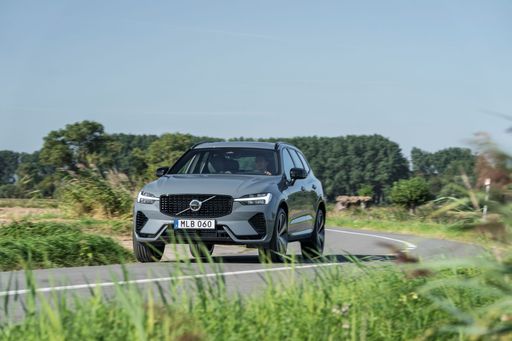 @ Volvo Cars
@ Volvo Cars
Volvo XC60
Mercedes GLB
The Mercedes-Benz GLB exudes a robust yet sophisticated presence, combining the versatility of an SUV with the elegance the brand is renowned for. Its spacious interior is thoughtfully designed to accommodate modern lifestyles, offering flexibility and comfort for both drivers and passengers. With advanced technology seamlessly integrated throughout, the GLB ensures a driving experience that is both dynamic and intuitive.
details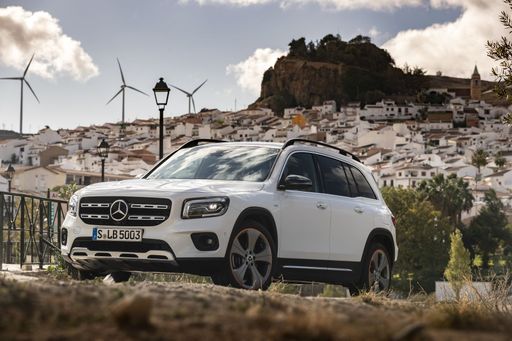 @ Mercedes-Benz Group Media
@ Mercedes-Benz Group Media
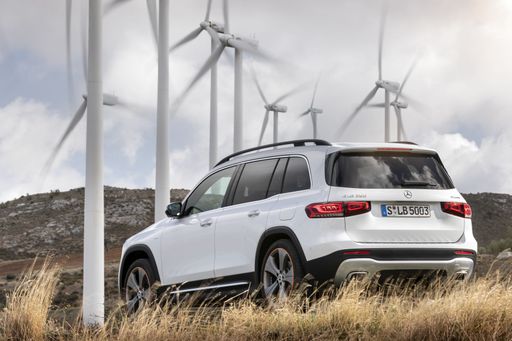 @ Mercedes-Benz Group Media
@ Mercedes-Benz Group Media
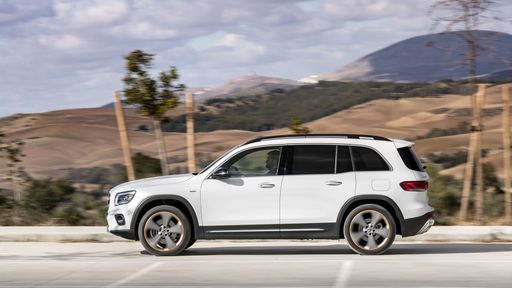 @ Mercedes-Benz Group Media
@ Mercedes-Benz Group Media
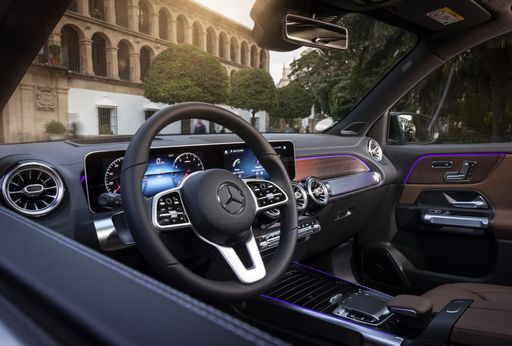 @ Mercedes-Benz Group Media
@ Mercedes-Benz Group Media
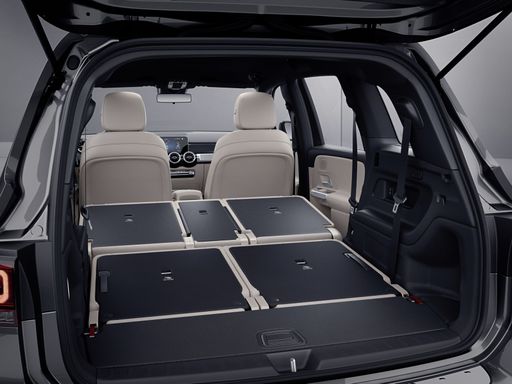 @ Mercedes-Benz Group Media
@ Mercedes-Benz Group Media
Volvo XC60
The Volvo XC60 blends Scandinavian calm with confident presence, offering a cabin that feels plush without shouting for attention. It’s a smart pick for buyers after a composed ride, clever practicality and thoughtful safety touches — it even makes running the family shuttle feel almost serene, which is a small miracle.
details @ Volvo Cars
@ Volvo Cars
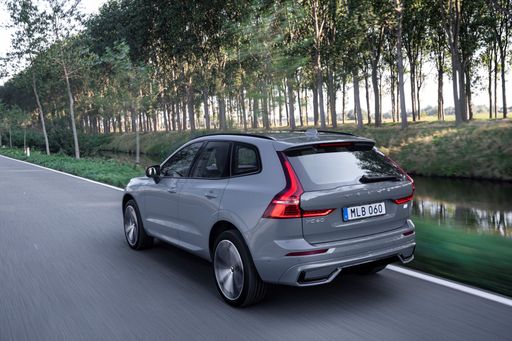 @ Volvo Cars
@ Volvo Cars
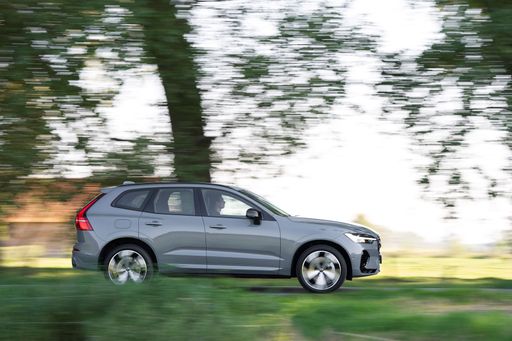 @ Volvo Cars
@ Volvo Cars
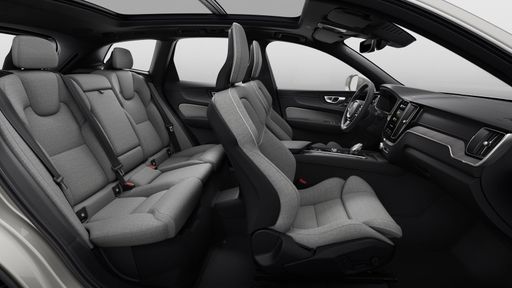 @ Volvo Cars
@ Volvo Cars
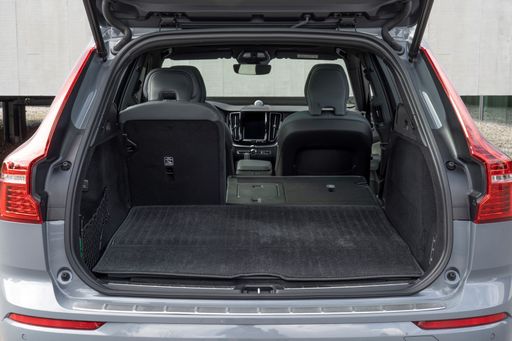 @ Volvo Cars
@ Volvo Cars
 @ Mercedes-Benz Group Media
@ Mercedes-Benz Group Media
|
 @ Volvo Cars
@ Volvo Cars
|
|
|
|
Costs and Consumption |
|
|---|---|
|
Price
40500 - 65300 £
|
Price
49200 - 75100 £
|
|
Consumption L/100km
5.6 - 9 L
|
Consumption L/100km
2.8 - 7.5 L
|
|
Consumption kWh/100km
-
|
Consumption kWh/100km
-
|
|
Electric Range
-
|
Electric Range
74 - 82 km
|
|
Battery Capacity
-
|
Battery Capacity
14.70 kWh
|
|
co2
146 - 204 g/km
|
co2
64 - 169 g/km
|
|
Fuel tank capacity
52 - 60 L
|
Fuel tank capacity
71 L
|
Dimensions and Body |
|
|---|---|
|
Body Type
SUV
|
Body Type
SUV
|
|
Seats
5
|
Seats
5
|
|
Doors
5
|
Doors
5
|
|
Curb weight
1640 - 1820 kg
|
Curb weight
1900 - 2150 kg
|
|
Trunk capacity
565 - 570 L
|
Trunk capacity
468 - 483 L
|
|
Length
4634 - 4650 mm
|
Length
4708 mm
|
|
Width
1834 - 1850 mm
|
Width
1902 mm
|
|
Height
1665 - 1692 mm
|
Height
1651 - 1655 mm
|
|
Max trunk capacity
1800 - 1805 L
|
Max trunk capacity
1528 - 1543 L
|
|
Payload
500 kg
|
Payload
510 - 550 kg
|
Engine and Performance |
|
|---|---|
|
Engine Type
Petrol MHEV, Diesel
|
Engine Type
Petrol MHEV, Plugin Hybrid
|
|
Transmission
Automatic
|
Transmission
Automatic
|
|
Transmission Detail
Dual-Clutch Automatic
|
Transmission Detail
Automatic Gearbox
|
|
Drive Type
Front-Wheel Drive, All-Wheel Drive
|
Drive Type
All-Wheel Drive
|
|
Power HP
116 - 320 HP
|
Power HP
250 - 455 HP
|
|
Acceleration 0-100km/h
5.5 - 11.5 s
|
Acceleration 0-100km/h
4.9 - 6.9 s
|
|
Max Speed
188 - 250 km/h
|
Max Speed
180 km/h
|
|
Torque
230 - 400 Nm
|
Torque
350 - 709 Nm
|
|
Number of Cylinders
4
|
Number of Cylinders
4
|
|
Power kW
85 - 235 kW
|
Power kW
184 - 335 kW
|
|
Engine capacity
1332 - 1991 cm3
|
Engine capacity
1969 cm3
|
General |
|
|---|---|
|
Model Year
2025
|
Model Year
2025
|
|
CO2 Efficiency Class
E, F, G
|
CO2 Efficiency Class
F, B
|
|
Brand
Mercedes-Benz
|
Brand
Volvo
|
What drivetrain options does the Mercedes GLB have?
Available configurations include Front-Wheel Drive or All-Wheel Drive.
The prices and data displayed are estimates based on German list prices and may vary by country. This information is not legally binding.
